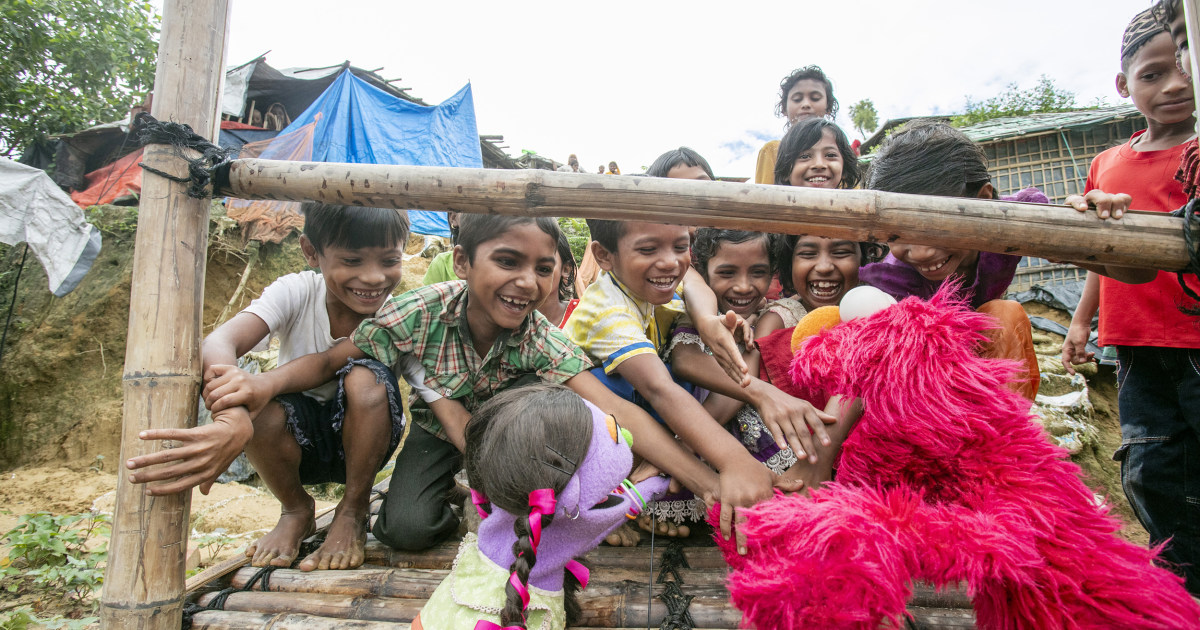
“Children in crisis situations need not only good educational opportunities but also ways to manage their own stress and socio-economic well-being,” said John Goodwin, CEO of the LEGO Foundation.
BRAC, Sesame’s non-profit partner in Bangladesh, has a history of educational success outside the camps: 85 percent of children in BRAC schools complete fifth grade.
Development of the new Rohingya Muppets started last year.
The Sesame team first examined the reactions to characters such as Elmo and Grover from the Indian co-production. They also sought feedback from the caretakers of the Rohingya children – a process that, according to Westin, revealed a particular fondness for characters who value education, honesty and caring for others.
The design team made the initial character sketches, but before going any further, Sesame executives wanted to ask for feedback from the people who mattered most.
In February, just before the Covid-19 pandemic hit, about a dozen Rohingya children and their caregivers gathered for a focus group led by Kim Foulds, senior director of international research and evaluation at Sesame Workshop.
The meeting demonstrated Sesame’s demanding approach to creating new characters. Sesame executives wanted to hear directly from the kids themselves what types of Muppets would resonate with them.
“We know children learn best when they see themselves,” said Westin. “So it’s so important that they identify with these characters.”
In a colorful space decorated with children’s art on the walls, Foulds presented the children with a set of four images and, with the help of a translator, asked them to choose which one they preferred.
The girls went first. The black and white characters had different clothes, hairstyles and shoes. Staring at the set of four, the first girl to answer may have shown too much enthusiasm.
“All of them,” she said when asked to choose the one she liked best.
Questions were also asked of the parents.
“Which of these characters would you most like children in your community to say hello to?” Foulds asked.
She later asked, “Which of these is likely to go to school?”
As the session progressed and the children were given characters in color, the feedback became more specific – exactly what the Sesame executives had hoped for.
Some girls thought one of the female muppets had too much lipstick. One boy said he liked one of the characters wearing sandals.
The children were eventually asked to pick their favorite and choose a name. Foulds ended the session of about 30 minutes with a thank you and a promise.
“We take all the feedback you’ve given us, share it with our teams at home, and create content that looks like you, that talks about what you like best, what you don’t like,” she said. “And we’re going to make two new Rohingya muppets for you and your friends.”